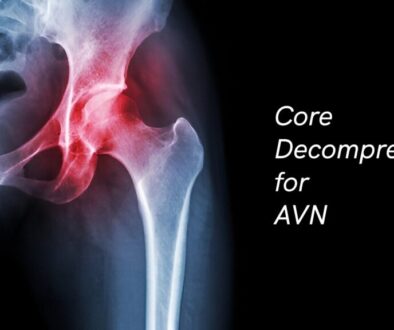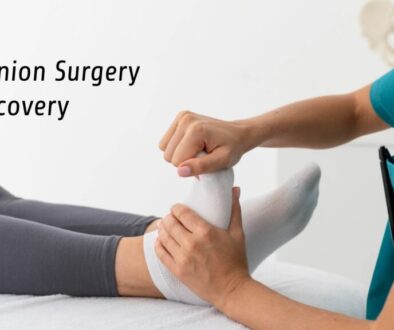Insertional Achilles Tendinitis: Causes, Symptoms, and Cure
Introduction
Insertional Achilles tendinitis is a painful condition that affects the lower part of the Achilles tendon, where it attaches to the heel bone. It is a common overuse injury that can impact athletes, active individuals, and even people with sedentary lifestyles. Understanding the causes, symptoms, and treatment options can help manage the condition effectively and prevent long-term complications.
This article will provide an in-depth look at insertional Achilles tendinitis, including how it develops, how to treat it, and strategies to prevent it from recurring.
Understanding the Achilles Tendon
The Achilles tendon is the largest and strongest tendon in the body, connecting the calf muscles (gastrocnemius and soleus) to the heel bone (calcaneus). It plays a crucial role in walking, running, and jumping by transmitting force from the muscles to the foot.
However, despite its strength, the Achilles tendon is prone to injuries due to excessive stress, repetitive use, and degenerative changes over time.
What is Insertional Achilles Tendinitis?
Insertional Achilles tendinitis refers to inflammation, degeneration, or micro-tears in the Achilles tendon where it inserts into the heel bone. Unlike non-insertional Achilles tendinitis, which affects the mid-portion of the tendon, insertional tendinitis is specifically located at the lower attachment site.
This condition can cause pain, stiffness, and swelling in the back of the heel, making activities such as walking, running, or even standing for prolonged periods uncomfortable.
Causes and Risk Factors
Several factors contribute to the development of insertional Achilles tendinitis, including:
1. Overuse and Repetitive Stress
- Engaging in high-impact sports like running or basketball
- Sudden increases in training intensity or duration
- Frequent jumping or sprinting activities
2. Improper Footwear
- Wearing shoes with poor arch support or cushioning
- Using worn-out athletic shoes that no longer provide shock absorption
3. Age and Degenerative Changes
- More common in individuals over 40 due to reduced tendon elasticity
- Degenerative tendinopathy can lead to weakened tendon fibers
4. Biomechanical Factors
- Flat feet or overpronation, causing excessive strain on the Achilles tendon
- Tight calf muscles, leading to increased stress on the heel attachment
Symptoms of Insertional Achilles Tendinitis
The symptoms of insertional Achilles tendinitis typically develop gradually and may include:
- Pain at the back of the heel, especially when walking or running
- Swelling and tenderness in the affected area
- Morning stiffness or discomfort that improves with movement
- Pain when wearing tight shoes that press against the back of the heel
- Reduced ankle flexibility, making activities like squatting or lunging difficult
If left untreated, the condition can worsen, leading to chronic pain or even partial tendon tears.
How is Insertional Achilles Tendinitis Diagnosed?
Accurate diagnosis is crucial for proper treatment and management of insertional Achilles tendinitis. Healthcare providers use a combination of clinical examinations and imaging tests to confirm the condition and rule out other potential issues, such as Achilles tendon ruptures or Haglund’s deformity.
1. Physical Examination
A doctor will begin by discussing your symptoms, medical history, and activity levels. During the physical exam, they will:
- Check for tenderness at the back of the heel where the Achilles tendon inserts.
- Look for swelling or redness in the affected area.
- Assess ankle flexibility and range of motion to determine stiffness.
- Perform the Thompson Test to rule out an Achilles tendon rupture (if you can still flex your foot, the tendon is intact).
2. Imaging Tests
If needed, imaging tests provide a more detailed view of the tendon and surrounding structures:
- X-rays – Used to check for bone spurs or calcifications at the Achilles insertion point.
- Ultrasound – Helps visualize tendon inflammation, thickening, or small tears.
- MRI (Magnetic Resonance Imaging) – Provides a comprehensive look at the tendon’s structure and any degenerative changes.
These tests help determine the severity of the condition and guide the most appropriate treatment plan.
Treatment Options for Insertional Achilles Tendinitis
Treatment for insertional Achilles tendinitis varies depending on the severity of symptoms. Most cases improve with conservative treatments, while severe or persistent cases may require advanced therapies or surgery.
1. Conservative Treatments (First-Line Approaches)
Most cases respond well to non-surgical treatments, including:
A. Rest and Activity Modification
- Avoid high-impact activities like running or jumping.
- Switch to low-impact exercises like swimming or cycling.
- Reduce excessive walking, especially on hard surfaces.
B. Ice Therapy and Anti-Inflammatory Medications
- Apply ice packs to the affected area for 15-20 minutes several times a day.
- Use NSAIDs (nonsteroidal anti-inflammatory drugs) like ibuprofen to reduce pain and swelling.
C. Stretching and Strengthening Exercises
Proper exercises help relieve tightness and build tendon resilience:
- Calf stretches – Gently stretch the Achilles tendon and calf muscles.
- Eccentric heel drops – Strengthen the tendon by slowly lowering the heel off a step.
- Toe raises – Help improve strength without excessive strain.
D. Footwear Adjustments and Orthotics
- Wear supportive shoes with cushioning in the heel area.
- Use heel lifts or orthotic inserts to reduce stress on the Achilles tendon.
- Avoid stiff-backed shoes that may press against the inflamed tendon.
2. Advanced Medical Treatments
If symptoms persist despite conservative care, more advanced options may be needed:
A. Physical Therapy
A physical therapist can design a personalized rehabilitation program that includes:
- Manual therapy to improve mobility.
- Specific exercises targeting Achilles tendon strength.
- Techniques like dry needling or deep tissue massage for pain relief.
B. Extracorporeal Shockwave Therapy (ESWT)
- Uses high-energy sound waves to stimulate tendon healing.
- Helps break down calcifications and improve blood flow.
- Often recommended for chronic cases that do not respond to other treatments.
When is Surgery Necessary?
Surgery is typically considered a last resort if conservative treatments fail after 6–12 months and the pain significantly impacts daily activities.
Indications for Surgery
- Severe tendon damage or chronic pain that does not improve with therapy.
- Large bone spurs or calcifications causing mechanical irritation.
- Degenerative changes that limit function.
Common Surgical Procedures
Several procedures can address insertional Achilles tendinitis, including:
1. Achilles Tendon Debridement and Repair
- Removal of damaged tendon tissue and any calcifications.
- Repair of the remaining healthy tendon.
2. Achilles Tendon Lengthening
- Performed if the calf muscles are excessively tight.
- Helps reduce strain on the Achilles tendon.
3. Removal of Bone Spurs (Haglund’s Deformity Surgery)
- If a bony enlargement is irritating the tendon, it may need surgical removal.
- Often combined with tendon repair.
Recovery After Surgery
- Immobilization in a cast or walking boot for several weeks.
- Gradual return to weight-bearing activities with physical therapy.
- Full recovery may take 6–12 months depending on the procedure.
Recovery and Rehabilitation
Recovery from insertional Achilles tendinitis varies based on the severity of the condition and the treatment approach.
Post-Treatment Rehabilitation Process
A structured rehabilitation plan includes:
1. Phase 1: Pain and Inflammation Control
- Rest, ice, and NSAIDs to reduce swelling.
- Avoiding high-impact activities.
2. Phase 2: Restoring Flexibility and Strength
- Gentle stretching exercises for the Achilles tendon.
- Isometric strengthening (static muscle contractions without movement).
3. Phase 3: Gradual Return to Activity
- Progressive strengthening exercises.
- Low-impact exercises before resuming running or jumping.
Expected Timeline for Healing
- Mild cases: 6–8 weeks.
- Moderate cases: 3–6 months.
- Severe cases (or post-surgery): 6–12 months.
Prevention Strategies
To prevent recurrence of insertional Achilles tendinitis, follow these strategies:
1. Proper Warm-Up and Stretching
- Perform dynamic stretches before activities.
- Focus on calf flexibility and Achilles tendon mobility.
2. Choosing the Right Footwear
- Wear shock-absorbing shoes with adequate arch support.
- Avoid flat, unsupportive shoes like flip-flops.
3. Managing Activity Levels
- Gradually increase training intensity.
- Incorporate rest days into workout routines.
Living with Insertional Achilles Tendinitis
If you have chronic insertional Achilles tendinitis, you may need to adopt lifestyle modifications to manage symptoms long-term:
- Modify activities to avoid aggravating movements.
- Use heel lifts or orthotics to minimize tendon strain.
- Incorporate regular stretching and strengthening into daily routines.
Exercises to Strengthen and Protect the Achilles Tendon
Here are some effective exercises:
- Eccentric Heel Drops – Slowly lower your heels off a step.
- Calf Stretch Against a Wall – Stretch the calf muscles to reduce tightness.
- Seated Towel Stretch – Use a towel to stretch the Achilles tendon.
Common Myths and Misconceptions
“Rest is the only solution.”
Controlled movement and rehabilitation exercises are essential for recovery.
“Surgery is always necessary.”
Most cases improve with conservative treatments—surgery is a last resort.
“All running shoes are good for Achilles tendinitis.”
Some shoes lack proper support—choose those with heel cushioning.
Conclusion
Insertional Achilles tendinitis is a painful but manageable condition. With proper treatment, rehabilitation, and preventive measures, most people can return to normal activities without long-term issues. If symptoms persist, consult a healthcare provider to explore advanced treatments or surgical options.
FAQs
- Can insertional Achilles tendinitis heal on its own?
Mild cases may improve with rest and therapy, but chronic cases need active treatment. - How long does recovery take?
It varies from a few weeks to several months, depending on severity. - Can I continue exercising with this condition?
Low-impact activities like swimming or cycling are recommended. - What are the best shoes for insertional Achilles tendinitis?Shoes with good arch support and heel cushioning work best.
- Does physical therapy really help?
Yes! It’s one of the most effective treatments for Achilles issues.



